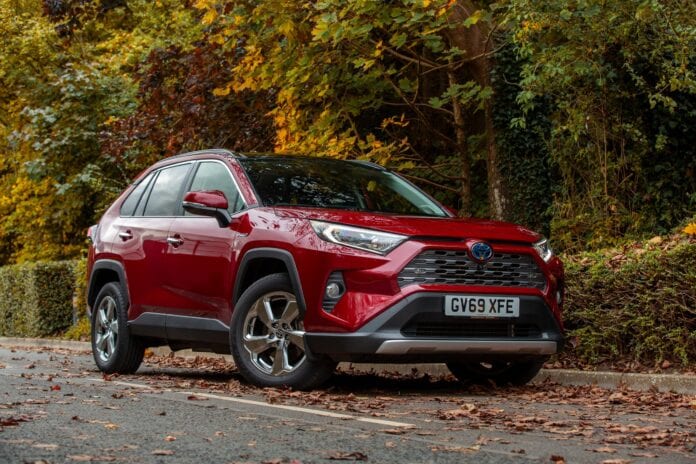With the clocks going back on Sunday 25 October signalling the end of British Summer Time, we’re well and truly in autumn, which brings a range of potential driving hazards to contend with. Darker afternoons and increasingly adverse weather correlate with an increase in the incidence of car accidents. In fact, an RAC study showed that a fortnight after the clocks go back, there is an annual average increase in car collisions of 5.1% (278 incidents).
Toyota has put together a series of tips to help you drive safely this autumn.
Slippery roads
Wet, fallen leaves are extremely slippery and can obscure road markings or hazards such as potholes. Morning frost can create icy patches on shaded areas of the road and across bridges. Take greater care when driving through rural areas by reducing your speed, especially around corners, and pay close attention to your lane discipline.
Deer breeding season
Autumn coincides with deer breeding season, so be extra careful driving through rural and wooded areas, especially during sunrise and sunset when deer are most active. Take special note in areas where deer warning signs are displayed.
Low temperatures
Prepare your car for colder weather by ensuring fluids such as engine coolant and windscreen wash are at the correct dilution and topped-up. Consider fitting cold weather tyres, which dramatically improve grip and stability when ambient temperatures are less than seven degrees Celsius.
Low sun
Use your visor to create some shade for your eyes. Reduce your speed to increase the safety margin between you and the car in front. Keep the inside and outside of your windscreen clean to reduce the effect of glare and the possibility of creating condensation.
Use your headlights when visibility is reduced. Regularly check the functioning of your lights and the condition of your windscreen wipers. Replace any defective bulbs and blades as necessary.
Rain and floods
Rain reduces your visibility and increases stopping distances, so it’s advisable to double the distance between you and the car in front. Should the steering begin to feel light or unresponsive due to rain or standing water, ease off the accelerator and slow down gradually. Do not attempt to cross deep water. A car can float in as little as two feet of standing water. If you’re confident that water is passable, drive slowly but keep engine revs high to avoid stalling. Be aware that bow waves from approaching vehicles can submerge your car to a much deeper level.
Clear leaves from your vehicle, especially around the scuttle panel directly under the windscreen, as these can block drainage holes and get caught under your windscreen wiper blades.
Fog
This is one of the most dangerous weather conditions as an accident involving one car can quickly escalate to involve others if they are driving too close. Leave a distance of at least three seconds between you and the car in front.
Use your headlights and fog lights to increase your visibility to others and at junctions, wind down your window and listen for traffic.
Strong winds
Expect sudden gusts at any time, but particularly on open stretches of road, through gaps in roadside hedges, or when crossing bridges. Hold on tightly to the steering wheel and be prepared to correct your course to stay in lane, or to avoid other vehicles and debris blown into your path.
Tyre Safety
The area of the average tyre that is in contact with the road when a car is moving, is the size of the palm of your hand, and it’s vitally important to allow a car to grip the road and react to driver inputs when it comes to steering, acceleration and braking. October is Tyre Safety Month, so check that your tyres have sufficient tread depth – we recommend a minimum of 3.0mm but the UK legal minimum is 1.6mm. You can use a 20p coin to check the tread by placing it inside the main tread groove of the tyre, and if you can’t see the outer band of the coin, there’s enough tread. Do this at three different places to make sure that the tyre’s tread is even all the way around.
Check the tyre pressures regularly: if tyres are underinflated, they can overheat; if they’re overinflated, a car’s handling can be adversely affected. The wrong pressure can also mean tyres wear more and unevenly. This means they may have to be replaced more often, and the car will use more fuel. Check your your car’s handbook to confirm the correct tyre pressures.

| [donate]
| Help keep news FREE for our readersSupporting your local community newspaper/online news outlet is crucial now more than ever. If you believe in independent journalism,then consider making a valuable contribution by making a one-time or monthly donation. We operate in rural areas where providing unbiased news can be challenging. |


















